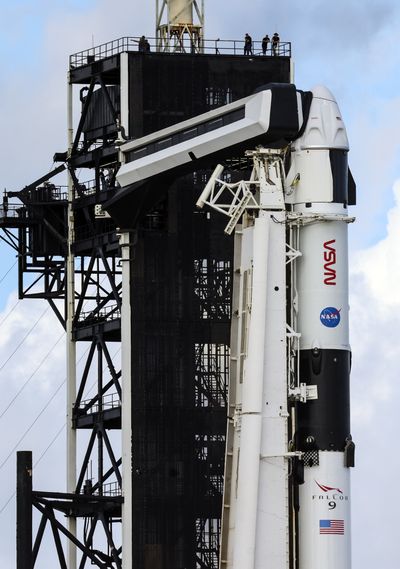SpaceX rocket fails in orbit

The second stage of a SpaceX Falcon 9 rocket sustained a rare but catastrophic failure Thursday night, unable to successfully deploy the company’s latest batch of Starlink internet satellites.
In a posting on social platform X two hours after launch, SpaceX CEO Elon Musk reported that the rocket had suffered a “RUD” – rapid unscheduled disassembly – while in orbit. “Team is reviewing data tonight to understand root cause,” he wrote.
But Friday, SpaceX provided an update on its website that the second stage had experienced a liquid oxygen leak and was unable to complete a second, short engine burn needed to put 20 Starlink satellites in the correct orbit.
Seeming to contradict Musk’s posting after the launch, the company said Friday that the second stage “survived,” deployed the satellites and was able to perform its usual shutdown tasks.
But the SpaceX update did not provide much detail on the fate of the second stage or the extent of damage it might have sustained.
The company did predict that the satellites could not remain in the low orbit and would fall back down to Earth, although it did not offer any timetable. “They do not pose a threat to other satellites in orbit or to public safety,” SpaceX said.
This is the first failure of a Falcon 9 rocket since 2016, when one exploded on the launchpad during the loading of propellants for an engine firing test. Between that explosion, which destroyed an Israeli satellite, and the malfunction Thursday, SpaceX had enjoyed a streak of more than 300 successful Falcon 9 missions.
The failure will most likely slow the rapid pace of Falcon 9 launches – one every 2.8 days so far this year. Company officials have said they were aiming to launch more than 140 times this year, up from 91 Falcon 9 launches last year.
It could also delay upcoming missions taking astronauts to orbit.
The private Polaris Dawn mission led by entrepreneur Jared Isaacman is scheduled for the end of this month. And in mid-August, Crew-9 for NASA is expected to take four astronauts to the International Space Station.
On Thursday, the initial part of the flight occurred without a problem. The Falcon 9 lifted off from Vandenberg Space Force Base in California at 7:35 p.m. Pacific time, blasting through dense fog. The first-stage booster fired about 2 1/2 minutes before dropping away and landing on a barge in the Pacific Ocean.
SpaceX reuses the Falcon 9 boosters over and over. The second stage for each Falcon 9 launch is new, burning up in the atmosphere after deploying its payload. During a webcast of the mission, an unusual buildup of ice could be seen on the side of the rocket with chunks breaking away. The second stage completed a six-minute firing to reach an elliptical orbit around Earth.
As is typical for its coverage of Starlink missions, SpaceX ended the webcast at that point. The second stage was scheduled to fire again, for just one second, to shift the orbit from elliptical to circular.
SpaceX initially reported that the Starlink satellites were deployed but in the wrong orbit, a lower one than intended, and said that it had made contact with five of them.
The satellites should have been placed in a circular 183-mile-high orbit, but instead the unsuccessful burn could only raise the low point of the elliptical orbit to an altitude of 86 miles above the Earth’s surface, SpaceX said.
“We’re updating satellite software to run the ion thrusters at their equivalent of warp 9,” Musk wrote on X on Thursday. “Unlike a Star Trek episode, this will probably not work, but it’s worth a shot. The satellite thrusters need to raise orbit faster than atmospheric drag pulls them down or they burn up.”
In its update Friday, SpaceX said, “At this level of drag, our maximum available thrust is unlikely to be enough to successfully raise the satellites. As such, the satellites will reenter Earth’s atmosphere and fully demise.”
The Falcon 9 has proved highly reliable even as SpaceX upgraded the design and started landing and reusing the boosters. The only in-flight destruction of a Falcon 9 occurred in 2015 during a mission carrying cargo for NASA to the International Space Station.
The Federal Aviation Administration will review the results of an investigation into Thursday’s rocket failure. It will be conducted by SpaceX, and the FAA must approve any needed fixes before Falcon 9 launches can resume.
“SpaceX will perform a full investigation in coordination with the FAA, determine root cause, and make corrective actions to ensure the success of future missions,” the company said.
This article originally appeared in The New York Times.